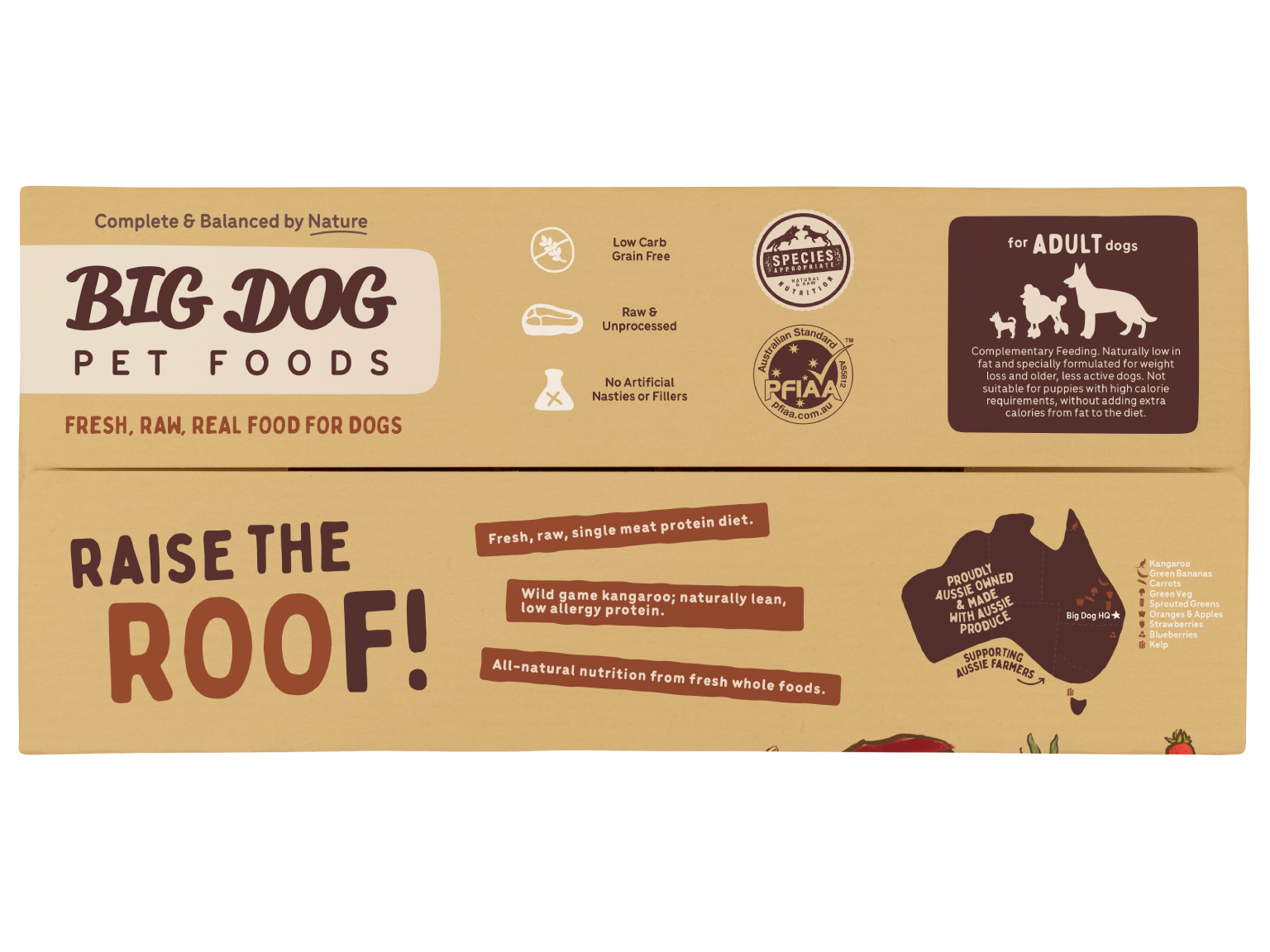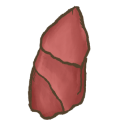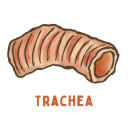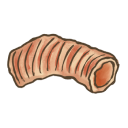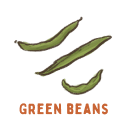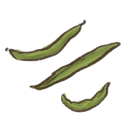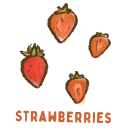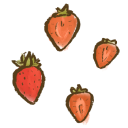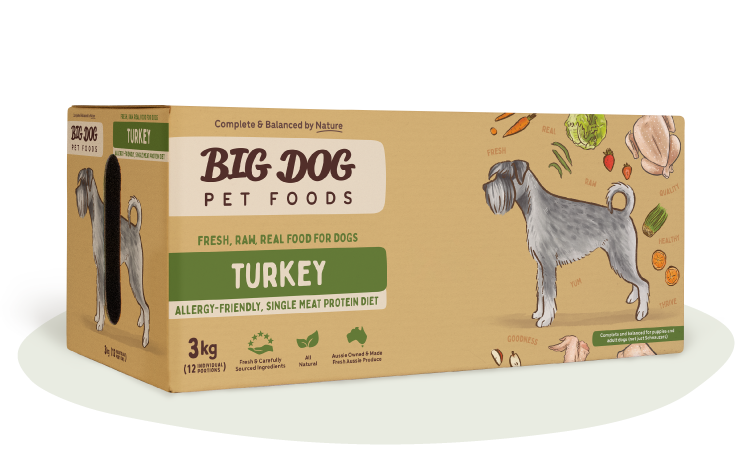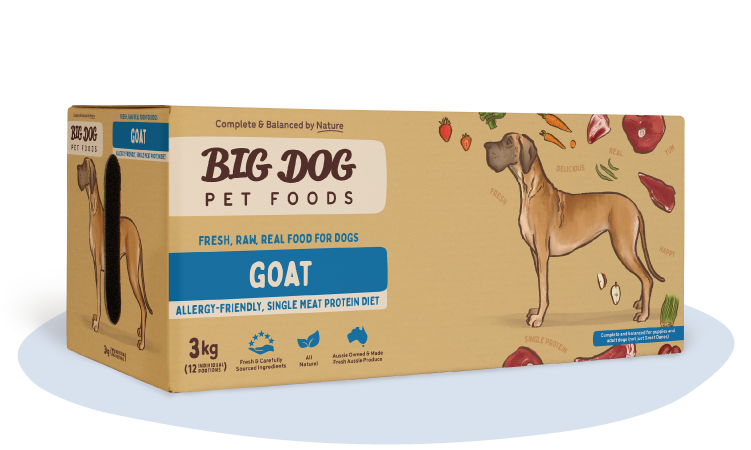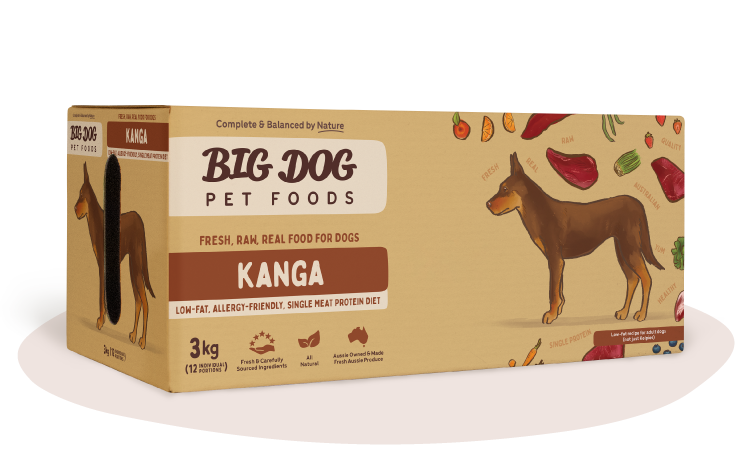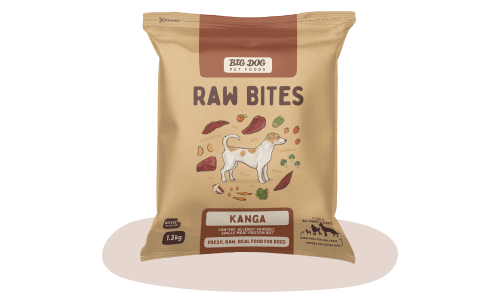Kangaroo Low Allergy, Single Protein Raw Diet
Kangaroo is a single-protein, low-fat, easy-to-digest diet ideal for dogs with allergies, though not suitable for puppies without added calories.
Price
Size

Raise the Roof!
Kangaroo is a rich protein source and a perfect alternative for dogs who are allergic to other meat proteins. Low in fat and easy to digest, Kanga is suitable for overweight dogs or dogs that need a low-fat diet for medical conditions as advised by your veterinarian.
Being a wild-game source, Australian kangaroo has minimal to no exposure to environmental chemicals, making it even more suitable for dogs that suffer from allergies. As with all our diets, this recipe wouldn’t be complete without a balanced blend of nutrient-dense fruits and vegetables, as well as Big Dog’s special extra ingredients for added nutrition and goodness for optimal health and wellbeing. This recipe is not suitable for puppies with higher calorie requirements without adding extra calories from fat to the diet.
High quality Raw Ingredients.. Always
At Big Dog we always use the highest quality human grade food sourced from Australian suppliers and local farms.
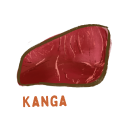
Kangaroo meat
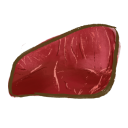
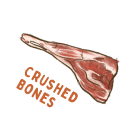
Crushed bone
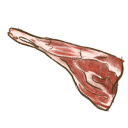

Cartilage
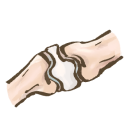
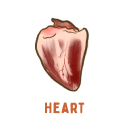
Heart
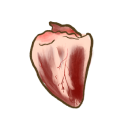
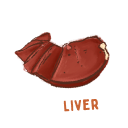
Liver
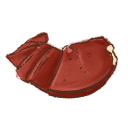
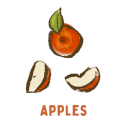
Apples
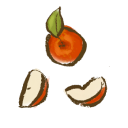

Green Bananas
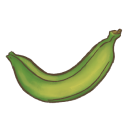
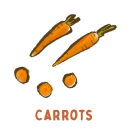
Carrots
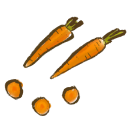
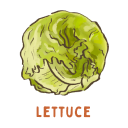
Lettuce

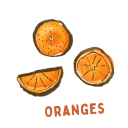
Oranges
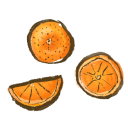
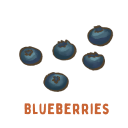
Blueberries
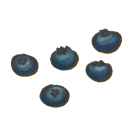
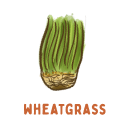
Sprouted Wheatgrass

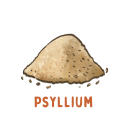
Psyllium
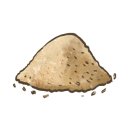
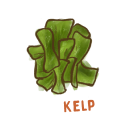
Kelp
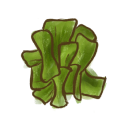

Organic Fulvic Acid

.png)
find out more
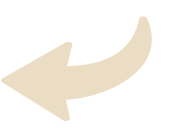
How to Raw Feed Your dog
- Calculate how much your pet needs to eat.
- Defrost their portion until thawed.
- Serve their meal!
How much to feed your pet
- Calculate how much your pet needs to eat.
- Defrost their portion until thawed.
- Serve their meal, and enjoy better dog poo!
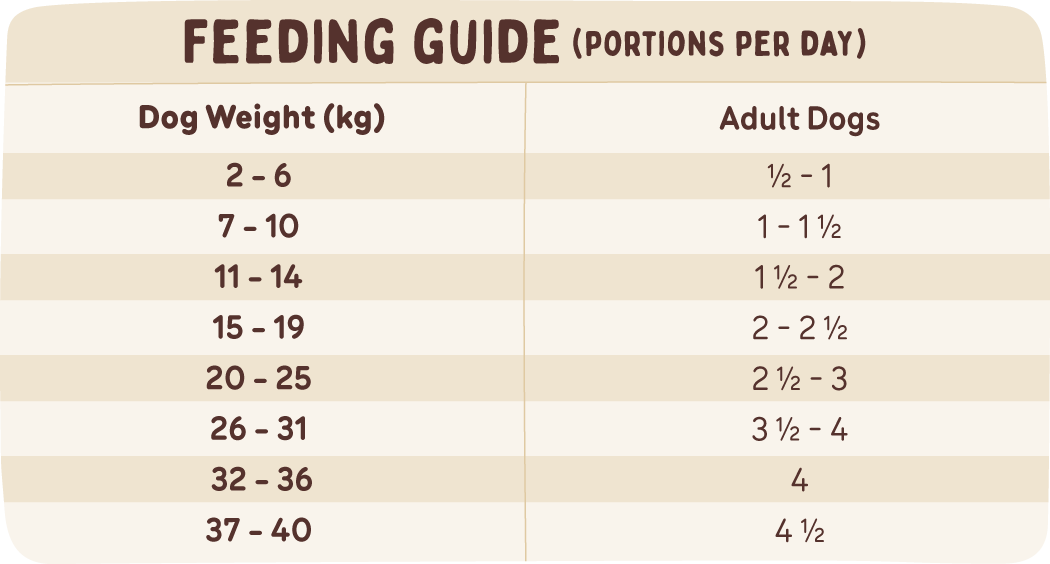
How to Transition to a Raw food diet
We recommend a 2 week transition to a new food:


Nutritional Info
Typical Analysis
Ingredients
Kangaroo (meat, crushed bone & cartilage, heart, liver, lung, trachea), apple, green bananas, carrots, lettuce, green beans, sprouted wheatgrass, orange, strawberries, blueberries, psyllium, kelp, organic fulvic acid.
Storage and Handling
Store frozen
Be sure to keep raw food frozen until ready for thawing. Thaw before feeding, avoid re-freezing.
Storage and Safety
This is an all-natural product with no preservatives; once thawed it must be used within 2-3 days. Keep thawed portions in a sealed, airtight container in your refrigerator. Do not cook as our recipe contains bone. It is important to discard any thawed product that no longer look or smells fresh.
Defrost Properly
To thaw, place portion in a container and allow to thaw in the fridge. To accelerate the thawing process, place in sink of lukewarm water for 15 - 30 minutes, ensuring not to cook.
Wash Well
Standard safe hygienic practices should be followed at all times when handling fresh, raw food; ensure all utensils, work areas and hands are thoroughly washed with warm soapy water after being in contact with raw food.
The Fine Print
- PET FOOD ONLY made from fresh and carefully sourced ingredients but not for human consumption.
- Contains raw offal and crushed raw bone - DO NOT COOK.
- Batch-to-batch variation may result from the use of fresh, seasonal produce.
How to use this product
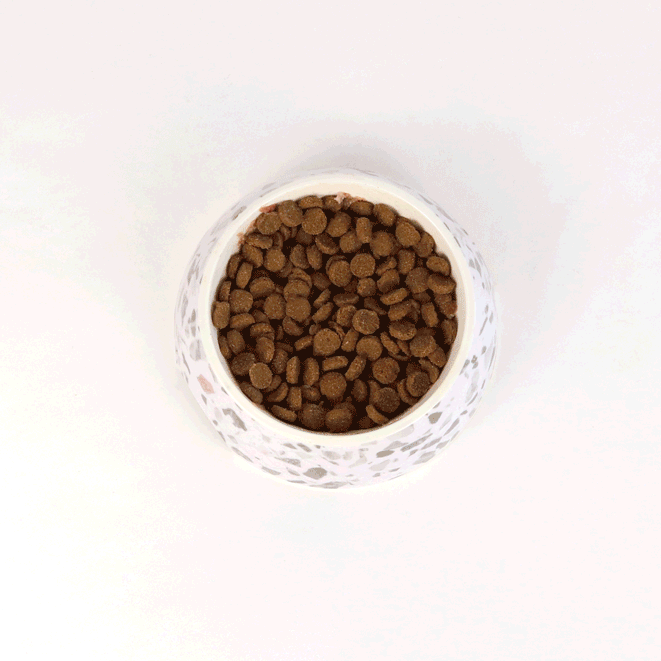
How to transition your dog to raw food easily

How do I Handle and Store Raw Dog Food?

A guide to raw feeding your puppy
FAQs
How do I transition my pet to your raw food?
We always recommend slowly introducing raw diets over 2 weeks. The reason for this is to minimise any potential for stomach upsets which can happen if a change in diet is sudden. Some pets will have no issues with a quick changeover in diet, however to be sure, we do recommend slowly introducing the new food.
Day 1-3: 20% New 80% Old
Day 4-6: 40% New 60% Old
Day 7-9: 60% New 40% Old
Day 10-12: 80% New 20% Old
Day 12+: 100% New Diet
Remember, there are no preservatives in our food so it will last only 2-3 days in the fridge once defrosted.
What is a raw food diet?
Raw food diets by definition are diets comprised of nothing but raw food. These can take many forms and the most popular of these is a BARF diet. BARF stands for biologically appropriate raw food or bones and raw food. This dietary model is based on the evolutionary diet animals would have eaten in the wild. Evolutionary raw diets are made up of fresh raw meat, offal, crushed meaty bones, vegetables, fruits and other healthy ingredients.
For more information on a Raw food diet for dogs – visit, “Evolution for dogs and a species appropriate diet”
Raw food diets are different for dogs and cats as they have different and unique dietary requirements.
All Big Dog raw diets are 100% natural, no synthetic vitamins and minerals, artificial chemicals, colours, flavours or preservatives are present. All Big Dog diets are raw and uncooked to best preserve the quality and nutritional value of the proteins.
Check out the Big Dog product range for dogs and cats here.
How long does a patty last? How long can I store it for?
Our patties are safe to use up to their expiry date as long as they have been correctly stored and frozen for the whole duration. After thawing the patty, we recommend they be kept in a sealed, airtight container in the fridge, and used within 2 - 3 days. Discard any thawed product that no longer looks or smells fresh. If you have a small dog and find our patties are too big for you to get through in time, check out our Big Dog for Small Dogs product and our Raw Bites.
Can I cook your food?
No. Our dog recipes contain crushed real bone. Not only does cooking change the nutritional value of the fresh healthy ingredients, cooking bone results in it becoming brittle, potentially splintering and should not be ingested by your dog in this state.
The exception to this is our Nourish Nutrition and cat recipes. While we recommend feeding them raw, it is safe to lightly cook these recipes, if necessary as they do not contain crushed bone.
Are low fat diets suitable for puppies?
We generally don’t recommend our Kangaroo recipe for puppies who need a higher fat diet to fuel them as they grow. In instances where a puppy has a suspected allergy and a low allergen protein, like Kangaroo is suitable, extra fat will need to be added to the diet to increase these levels for puppies, or you will need to feed MORE of these recipes to make sure they're getting enough calories each day.
Puppies requiring single protein diets can eat our Turkey or Goat single protein recipes.
Introducing our Kangaroo recipe to your dog
Kangaroo is a very rich tasting, 'gamey' meat. Some dogs will love the unique taste while others may regurgitate or reject the food and need a slow introduction.

